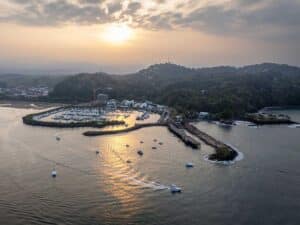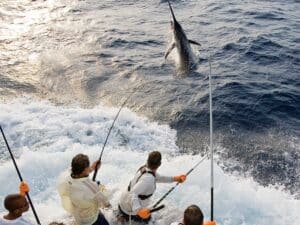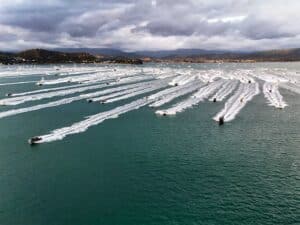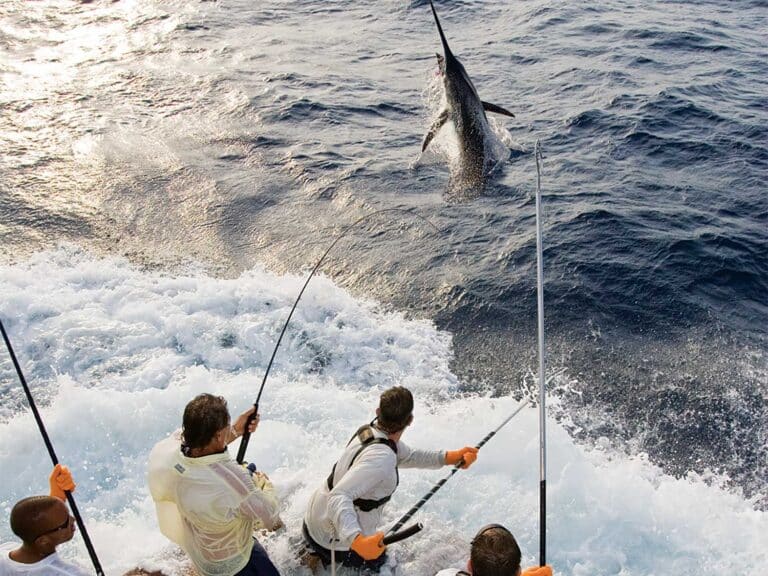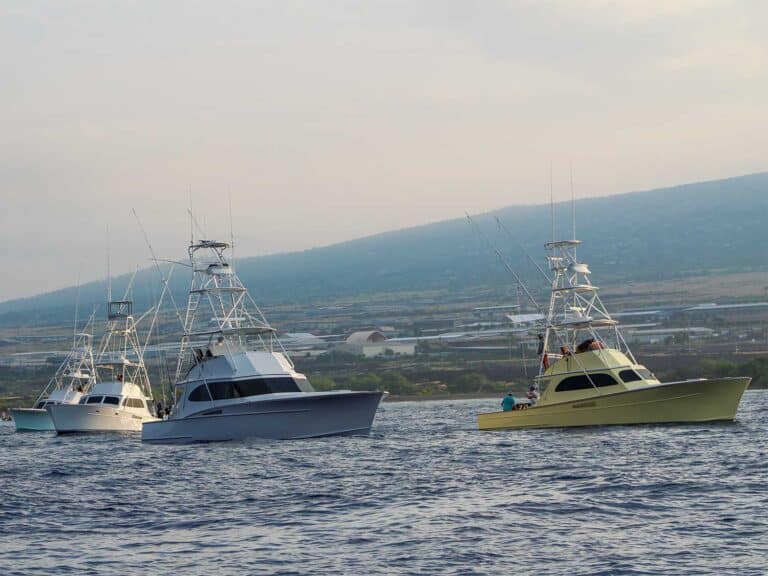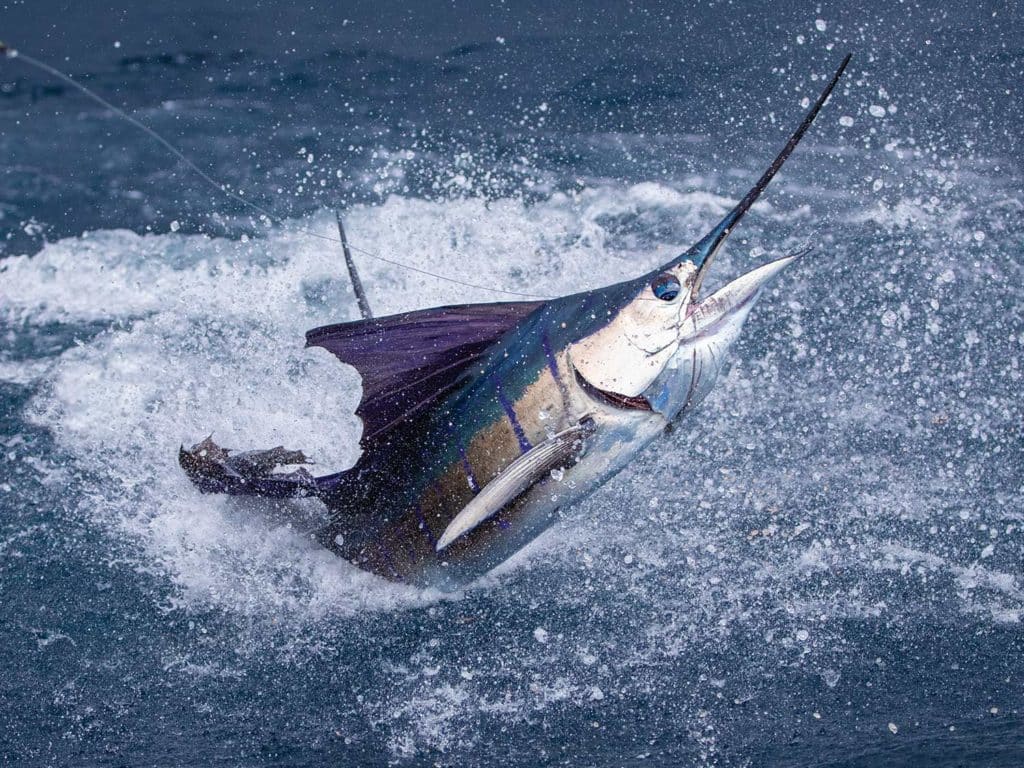
Don’t call it a throwback, but what if there was a tournament that focused on the skill level of the anglers in the cockpit rather than the technology of the boats; one that offered trophies and prizes rather than a six- or seven-figure payout (and without the corresponding college-tuition-level buy-in); one where participants must first qualify by winning a sanctioned event in their home waters before traveling to one of the sport’s most prolific international destinations, where they fish against other qualifiers at the highest levels of competition and camaraderie. Interested?
It’s called the Offshore World Championship, and this year it celebrates its 22nd anniversary. This year’s event, with title sponsor Costa sunglasses, is slated for April 24-29; it will also be filmed as a three-part television series.
Up-front disclaimer: The OWC is owned by Bonnier Corporation, which is the parent company of Marlin, as well as Marlin University and the SFTV television series, and it is that confluence of media, education and event expertise that ensures the event’s future is as bright as its storied past.
From Humble Beginnings
During his long tenure as president of the International Game Fish Association, Mike Leech was instrumental in scores of projects; among many, he was ultimately responsible for the development of the Offshore World Championship as a way to attract new membership. “I had been involved in many tournaments over the years, including as president of the Fort Lauderdale Billfish Tournament,” he says. “The idea that it could generate cash flow was secondary to membership growth.” Leech says that it took some convincing for the IGFA trustees to go along with the idea of sponsoring a world championship, but the plan was approved in June 1997, with a slate of qualifying events approved in 1999 and the first championship held in March 2000 in Kona, Hawaii. Thirty-eight teams from around the world showed up to fish. “One of the original goals of the IGFA in holding the event was to show the world that you did not need to have big cash prizes or to kill billfish to hold a successful competition,” Leech says. When Rolex came on board as a title sponsor, awarding each member of the winning team an engraved Submariner, the event took a major leap forward and became known as the Rolex IGFA Offshore World Championship, or simply, the Rolex.
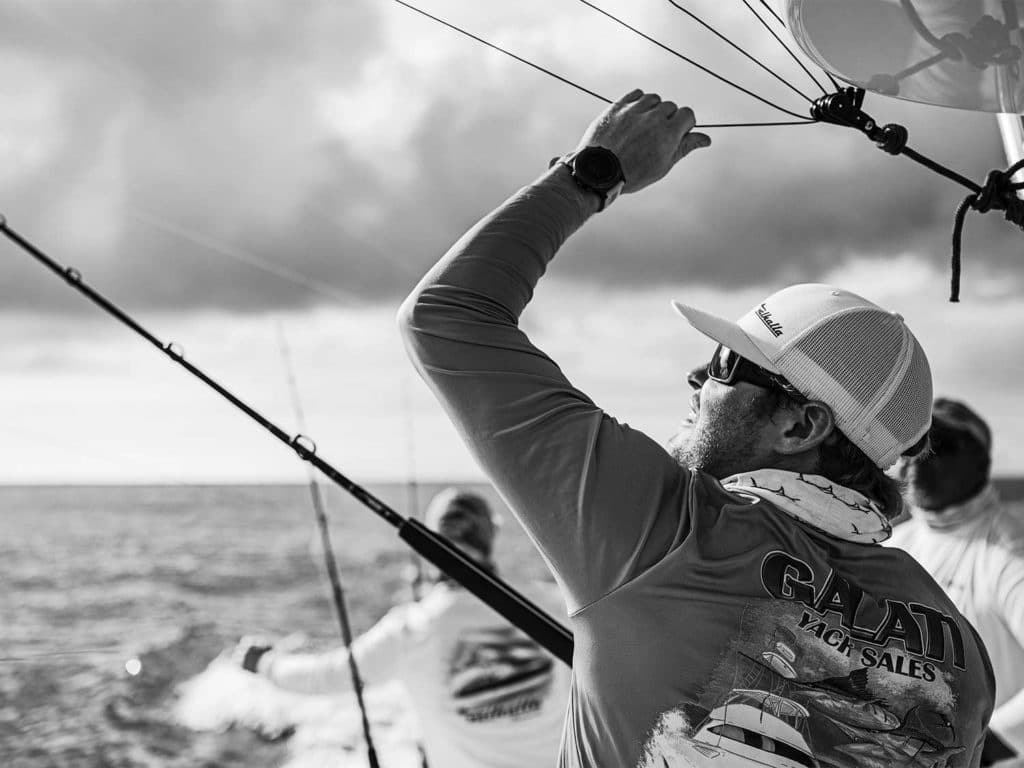
The IGFA chose Hawaii for several reasons. Kona has plenty of excellent charter boats with experienced captains and reasonable charter fees, plus calm seas and a year-round fishing season for blue, black and striped marlin, as well as spearfish. Then there’s the beautiful scenery and famed Hawaiian ambience, always a bonus for visiting anglers. Sue Vermillion was tapped as the first tournament director; she remained with the OWC every year Leech was in charge. Leech also hired Lynda Wilson, another invaluable member of the team, to coordinate the tournament at IGFA headquarters, a position she held until her retirement from Bonnier Events in 2018.
“I was the tournament director for the Hawaiian International Billfish Tournament, so folding in a new event went pretty well because I was already familiar with running a large tournament in Kona,” Vermillion says. “The logistical challenges were making sure we had the best boats, captains and venues for all of the events, and making sure that we were committed to running the most professional tournament possible.”
Watch: A belly-strip teaser is a great way to raise marlin and sailfish. Learn to rig one here.
Following similar concepts from the HIBT, the OWC instituted a system of boat rotations, where participating teams drew their charter-boat lineup for the tournament at random during the captains’ meeting. This prevented a team from chartering the hottest boat in the fleet and putting the others at a disadvantage right from the start. It’s a system that remains in place today and is a key feature in making the OWC one of the most competitive events of its kind.
If it’s one factor that Hawaii lacked, it was in the number of billfish. The first-place team in 2000—Ronald R. McCall II, R. Scott Hurley, Tom Castleman and Michael Bozzuto, representing the Allied Marine Sailfish Hoedown—scored 850 points from three releases in four days on the water. Many teams didn’t even see a billfish during their time in Kona. The 35 teams who fished the second year didn’t fare much better statistically. If the event was to become truly world-class, it needed a more prolific fishery.
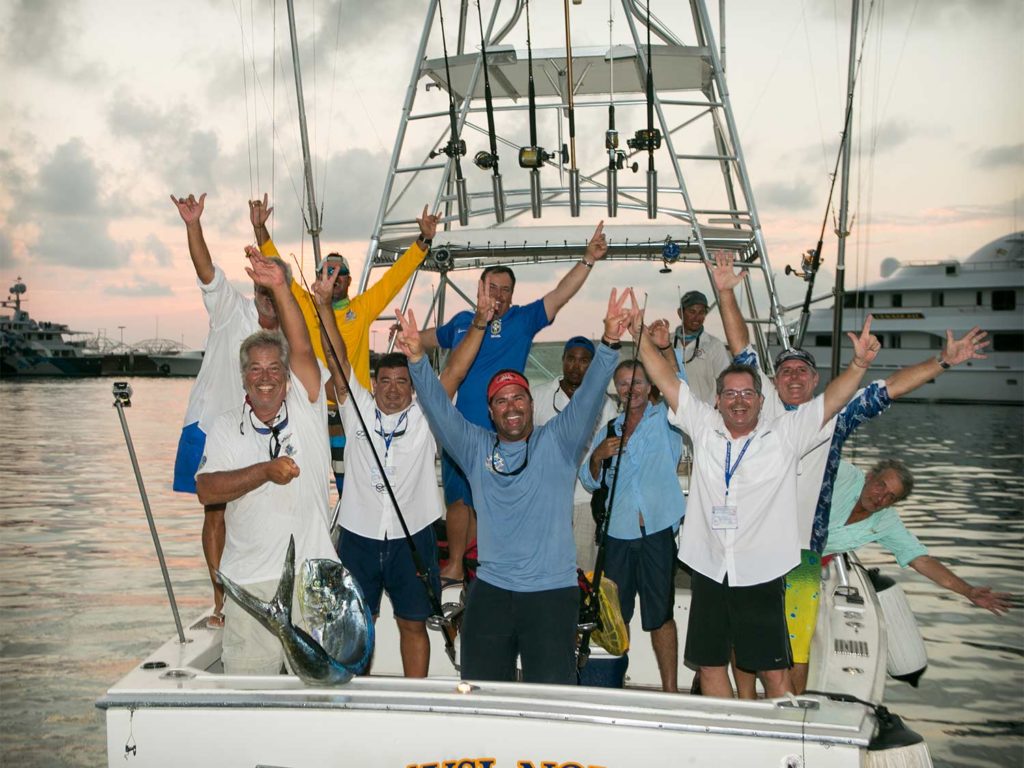
The Cabo Years
A fortuitous meeting between Leech and representatives of the Los Cabos tourism board led to a change of venue—from 2002 through 2012, the event would call Cabo San Lucas, Mexico, its home. The first event in May 2002 was a major success, hosting 57 teams from 25 countries. Cabo was home to a fleet of reasonably priced charter boats, a wide selection of hotels and restaurants, relatively inexpensive airfare and, perhaps best of all, plenty of marlin. “The next few years, we had close to 70 teams from all over the world, and most of them caught fish,” Leech says. “Some years, our teams released more than 500 striped marlin. It was incredible.”
Leech and Vermillion remained in charge of the event until 2003, when Mike Myatt assumed the role of tournament director from 2004 through 2008. “Sue Vermillion left an incredible blueprint to follow,” Myatt says. “For a director, you realize that not every team wins, so you have to make it an unforgettable experience for everyone. That’s really the key to a successful event. I was very fortunate to have an excellent team dedicated to the championship.” The local fishing community welcomed Myatt just as they had welcomed his predecessors. Influential locals such as Minerva and Bob Smith, Phil Gentile, and Marco and Tracy Ehrenberg were invaluable resources on the ground in Cabo as well, and the event marched on as it continued to grow in popularity.
But all that nearly ended in 2008, when at the time, a risk-adverse IGFA board of trustees was ready to pull the plug on the OWC.
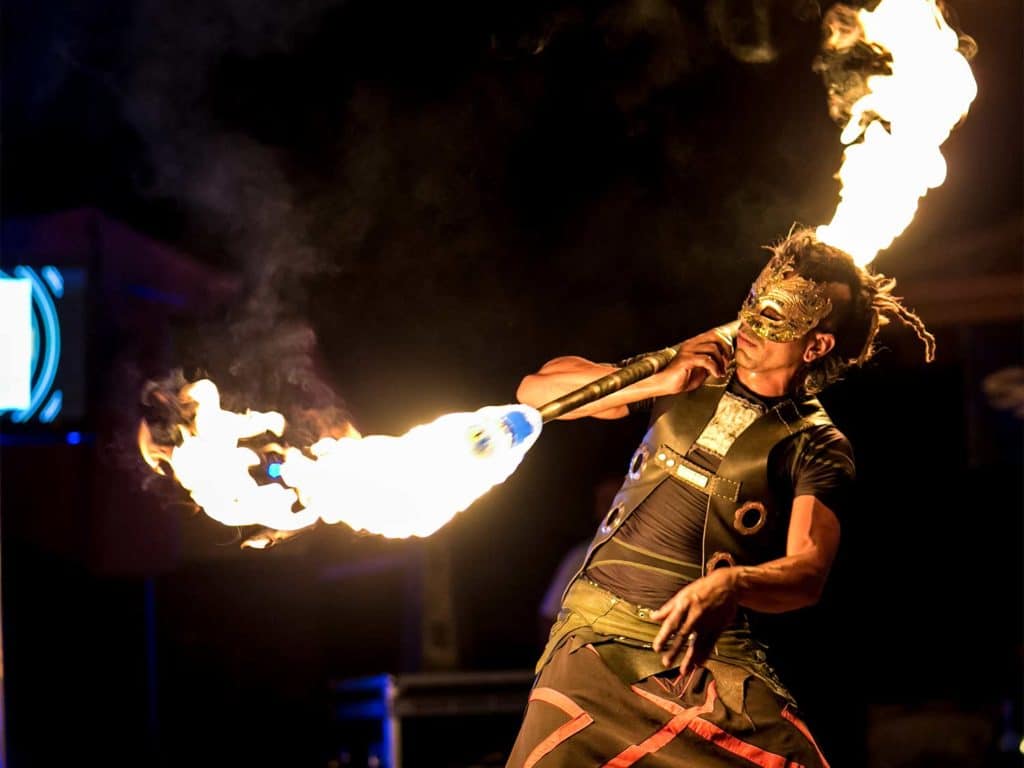
Changing Hands
“When the IGFA sent out a press release detailing its intentions to end the OWC after the 2008 event, it was definitely a head-turner,” says Dan Jacobs, the current tournament director. “I received various emails and phone calls convincing me to reach out to Mike Myatt to find a way to help. He was extremely receptive, and after a few hours on the phone, we had put together some good ideas on how we could keep this incredible event going.”
The IGFA carefully considered partner options and awarded Bonnier the license agreement in 2009. With that decision, Jacobs became tournament director, which he says was an absolute honor.
“I had the utmost confidence in Bonnier and Dan to continue leading the team and continue to seek excellence with the championship,” Myatt says.
“I know Cabo well because we had run the Los Cabos Billfish Tournament there since 1999, but the OWC was a very different format, and I needed to learn the ropes,” Jacobs says. “As luck would have it, in 2008, I was invited to fish on our Los Cabos Billfish Tournament-winning team that qualified for the OWC. That opportunity provided me great personal insight as an angler, as well as being able to work with the IGFA team for a year prior to being in the hot seat as director.”
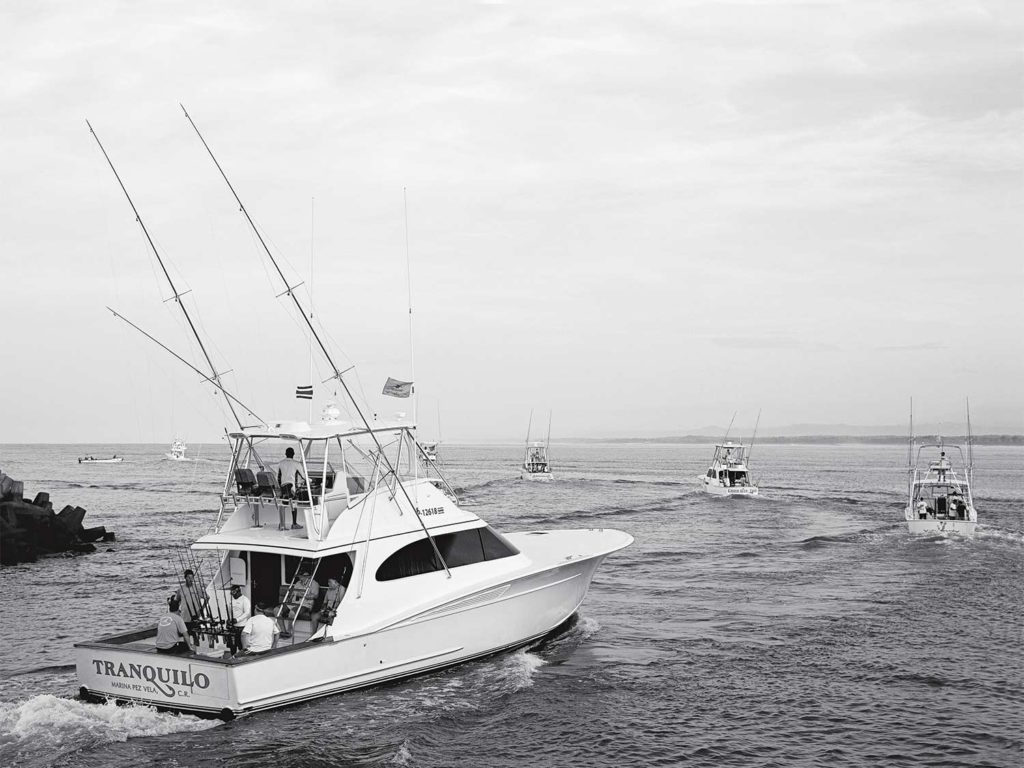
The Shift to Central America
After a decade in Mexico, and with direct feedback from the participants, the event looked to the future and a third change of venue in 2013, this time to the Central American nation of Costa Rica. Like its predecessors, it featured a host of excellent charter boats as well as stable weather conditions and outstanding billfishing. “In 2014, we had 64 teams release 2,735 billfish, setting a tournament record, only to be beaten in 2015 with 67 teams releasing 2,840 billfish,” Jacobs says. “That’s an average of more than 42 billfish per team over four days of fishing.” Now based in the central Pacific coastal community of Quepos, located on the edge of the Manuel Antonio National Park, the event is poised to continue its success as it finds its footing among a new generation of anglers coming up through the ranks. “We couldn’t have made this move without the help of the ownership of Marina Pez Vela and the Costa Rica tourism board,” Jacobs says. “The marina is the epicenter of the tournament and all the functions, and it’s one of the highlights of their entire fishing season each year.”
Fueling the Success
“This event has always done well among the international angling community,” Jacobs says. “These teams are more accustomed to fishing for the thrill of competition, while a lot of the US-based boats are only looking at how much they can win. Technology hasn’t helped in that respect either, with the increasing use of sonar and other advances.” At the end of it all, though, tournament success comes down to the angler in the cockpit, and that’s been fuel for the fire and the reason for the continued success of the Offshore World Championship.
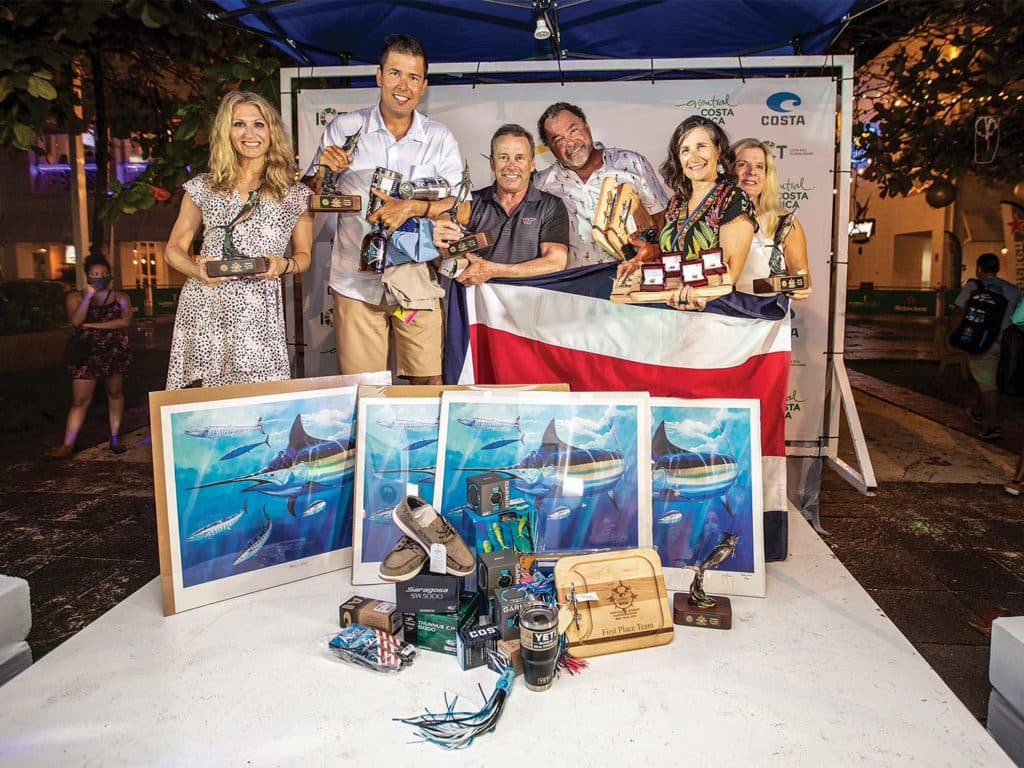
The Keys to Victory
As with any major tournament, there are a few critical factors to keep in mind when fishing the OWC. Here are some points to consider:
Assemble the Team
Anywhere from two to five anglers can fish the event; teams can register an unlimited number of anglers, but a maximum of five are allowed for each day of competition. And at least one person must have been a part of the original qualifying team. Those with light-tackle dead-bait experience will have a better shot at success. Professional anglers are not allowed, with professionals being defined as those who earn their primary source of income by fishing within the host nation. Professionals who fish for a living elsewhere in the world are allowed to compete; the entry fee covers four anglers, with a fifth at an additional charge.
Be Prepared and Know the Rules
Just as you wouldn’t tee off in the US Open with a set of rented golf clubs, it’s best to bring your own equipment to the OWC. The boats will supply dead bait; live bait is prohibited, and non-offset circle hooks are mandatory with bait and bait-and-lure combinations. IGFA tackle and angling rules apply throughout the event, so be sure that you know and understand the requirements ahead of time.
Pre-fish and Practice
This is critical, especially if your team hasn’t fished together recently. Arrive as early as possible, and schedule at least a few days of fishing so that everyone has the chance to not only get in a few shots, but also becomes used to fishing with one another in the close confines of a charter-boat cockpit. Also practice the video portion of the process—if you’re not fishing, you should be filming.
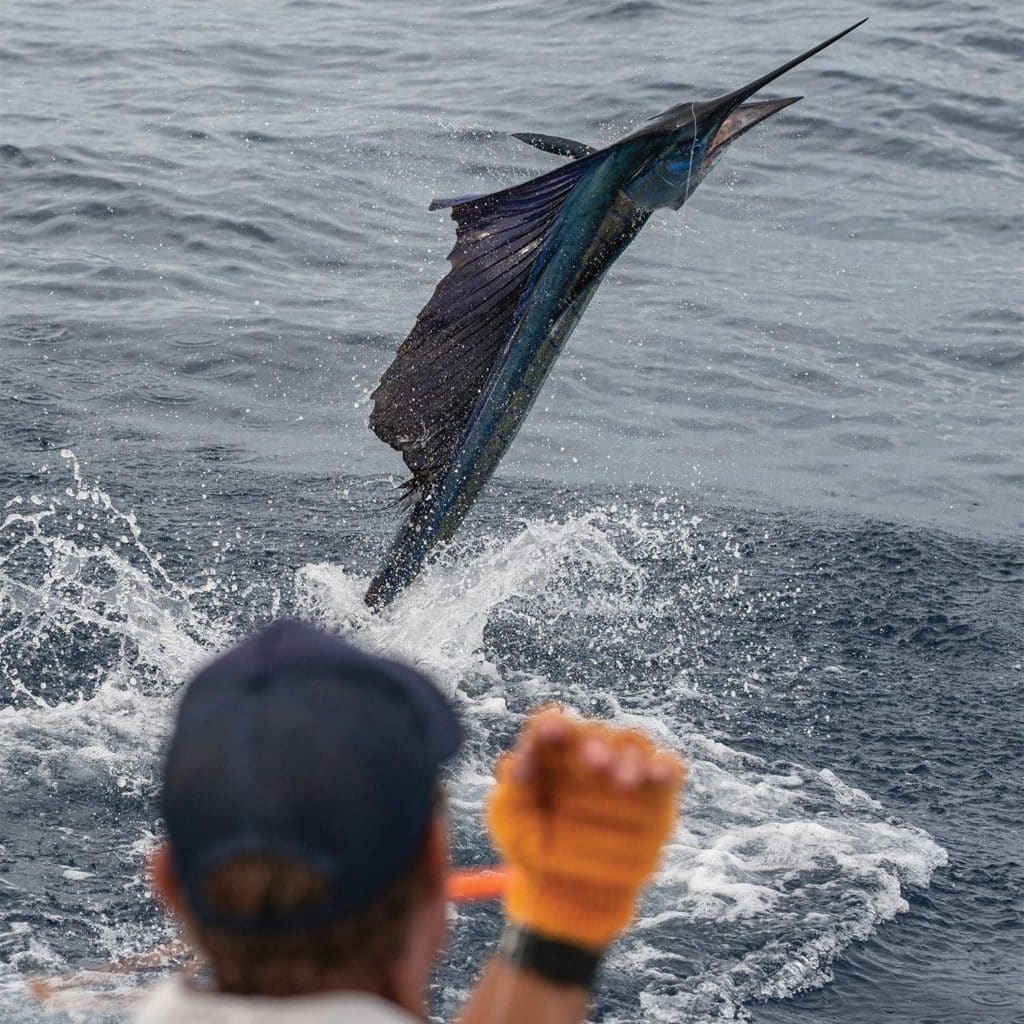
Point Structure
Sailfish are worth 200 points per release; blue, black and striped marlin are all scored at 500 points each. Additionally, gamefish may also be weighed for points if they exceed the tournament minimum of 25 pounds—many a tournament tiebreaker has been decided by the team weighing a nice meat fish, so this can be a key consideration should one appear in the spread. Up to two per species—dorado and yellowfin or bigeye tuna—can be weighed by a team each day, with 1 point per pound awarded, up to 100 pounds. Tuna from 100 to 199 pounds are scored at 1.5 points per pound, and any over 200 pounds is scored at 2 points per pound.
Video Star
All billfish releases are verified using team-supplied video, so be ready with multiple cameras and understand how they function. All video-recording equipment must be synchronized with the correct date and time stamp, and will be checked in by the tournament organizers prior to the start of the event. Teams must video their boat and team number each day prior to departure from the marina. To score an official release, the video must include sufficient footage to clearly identify the species; show a team member, angler or crew touching the leader while the fish is still hooked; identify the time and date of the catch; and show the catch and full release of the fish. A catch-report affidavit, signed by the angler and captain, then accompanies the video for verification at the end of each day. Having a waterproof camera, such as a GoPro, on a long stick can help capture the ID from underwater, which is helpful if the fish is bill-wrapped or not hooked well.
Read Next: A first-hand account of what it’s like to win the Offshore World Championship.
Getting There and Staying There
Quepos, Costa Rica, is easily accessible by air or ground. The fastest route from the nation’s capital of San Jose is to fly to La Managua Airport, just a few miles from downtown Quepos; several air carriers serve this route, and the flight is only about 30 minutes. Ground-transfer services are also widely available—it’s a scenic trip of about two and a half hours from San Jose.
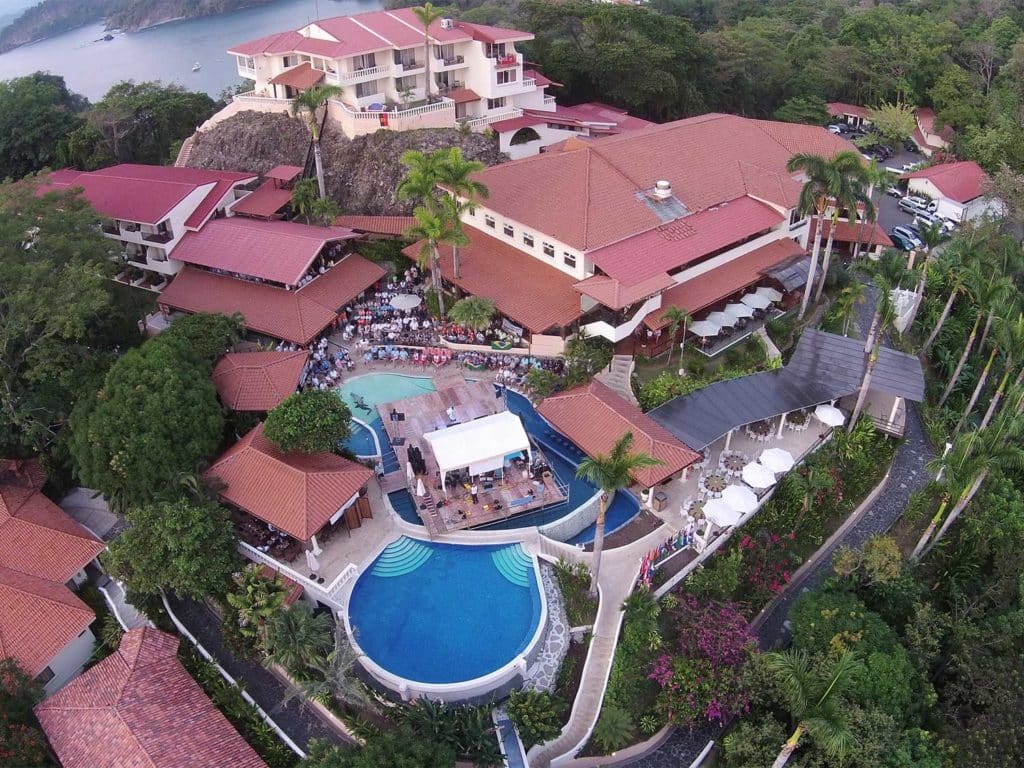
Called the epitome of responsible luxury, the Parador Resort and Spa (hotelparador.com) has been the host resort of the tournament for many years. It’s located on the Punta Quepos promontory and is surrounded by 12 acres of wildlife-rich tropical rainforest, with panoramic views of the Pacific Ocean and neighboring Manuel Antonio National Park. There is a variety of other lodging options in Quepos, but it’s hard to beat the friendly atmosphere of the Parador. If you prefer to rent an entire home, check out 2 Costa Rica Real Estate (2costaricarealestate.com). It has numerous rental options in the area and will be able to assist you in finding the right property that meets your needs.
This article originally appeared in the March 2022 issue of Marlin.
